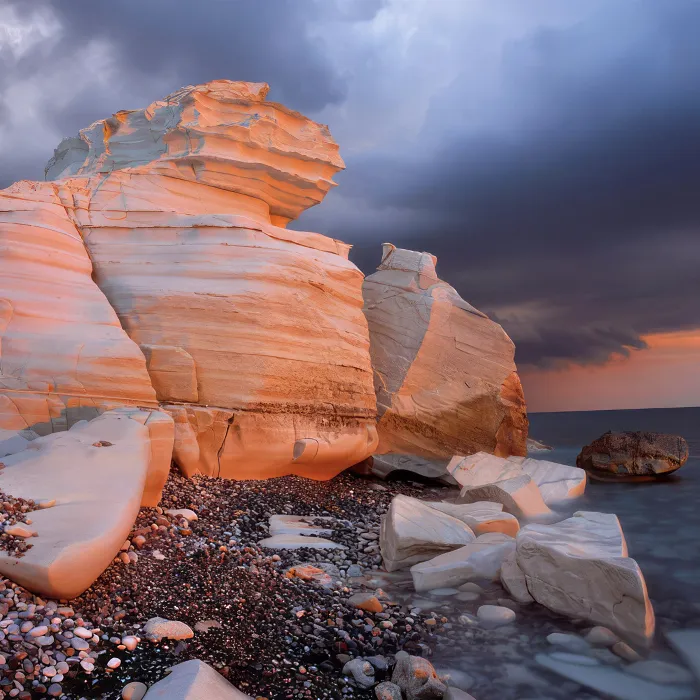For me, it's mountain landscapes on the one hand, but also mountain sports and advertising photography in the mountains on the other.
The Grande Casse in the French Vanoise National Park after a summer snowfall.
Three fundamentally different areas, which accordingly require different equipment.

Edelweiss with hiker - classic or modern? In any case, without Luis Trenker.
In the age of limitless pixels and, above all, an infinite number of cameras, it is becoming increasingly difficult for me to answer the question of the ideal equipment. New models are introduced almost every week, and almost every day there is a new test report somewhere in the world or in the infinite expanses of the web about various lenses, cameras and accessories, which often confuse us more than help us. The trick nowadays is to focus on your own requirements and your own field of activity and thus ignore the tempting range of products on offer all around you. The constant product offensive from Canon, Nikon, Sony and co. sometimes overwhelms me too. But this is exactly where I can learn something essential for the first time: to be patient. Even if one of the manufacturers has the better camera for a short time, the competition will follow suit. You don't have to think about changing systems straight away ...
Is there such a thing as ideal equipment? In order to be able to answer this question better, i.e. more individually, I would like to divide photography into three areas in this respect:
- the amateur who takes snapshots and wants more than his cell phone can deliver.
- the demanding amateur who wants to keep all technical possibilities open with modern SLR equipment.
- the professional who wants to use the images commercially and therefore needs maximum technical possibilities and quality.
Even if the first group has by far the widest range of cameras on offer, this is where the wheat is very quickly separated from the chaff. In order to make my following camera recommendation easier to understand, I would like to briefly introduce a few technical contexts: A major advantage of digital photography is its flexibility in terms of exposure, contrast, color temperature, etc. All of these valuable parameters can be adjusted to suit your needs. We can subsequently influence and correct all these valuable parameters on the computer - but only if we have a camera that can also record RAW data! With this so-called raw image data, these parameters are only determined afterwards, during the conversion to a finished image. Sounds complicated? Yes and no. The extra effort is worth it in any case.
In the light of the blue hour: Tent night in the Pala, Dolomites: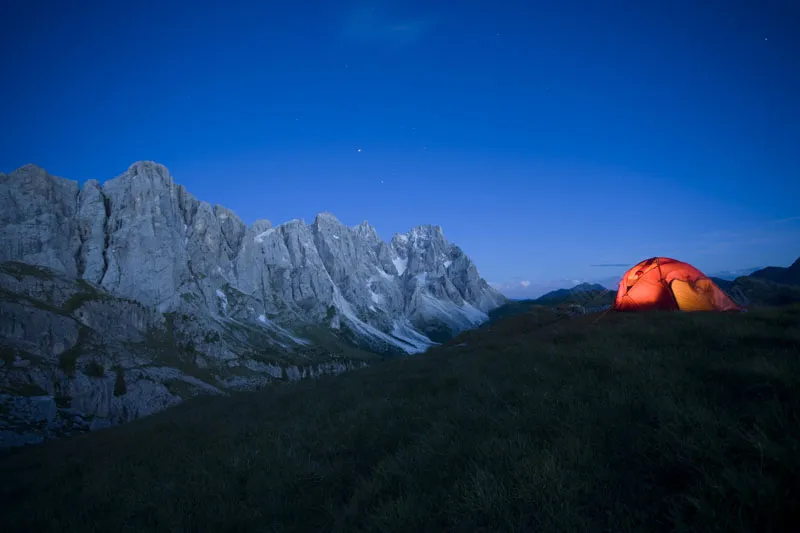
This brings us back to the cameras. 95% of all digital compact cameras now only produce JPEG images, which unfortunately means that precisely these essential parameters are determined by the camera's own software. Conclusion: The main advantages of digital photography are lost.
This dramatically reduces the choice. The new G10 from Canon or the D-Lux 3 3 or its successor D-Lux 4 from Leica are currently recommended.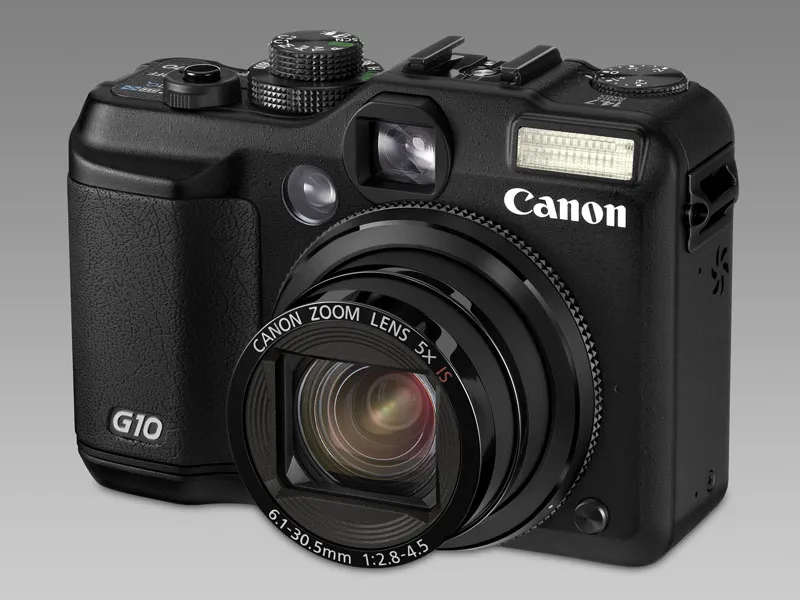
In relation to size, weight and above all price, the G10 from Canon delivers outstanding image results.
A great compact camera with over 10 million pixels: the Leica D-Lux 4: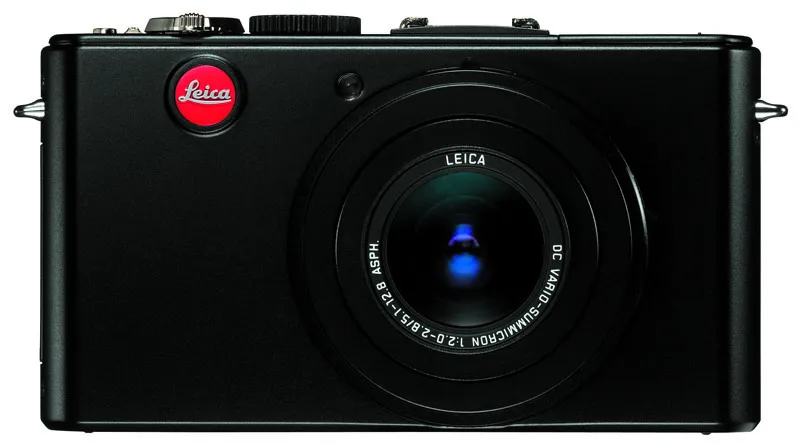
Both models impress with very good lenses (which is more important than ever in digital photography), a successful design and the ability to record not only JPEG but also RAW images.
You don't need much in the way of accessories for compact cameras: a sturdy little photo bag, a few high-quality memory cards from well-known manufacturers such as SanDisc and, last but not least, a spare battery.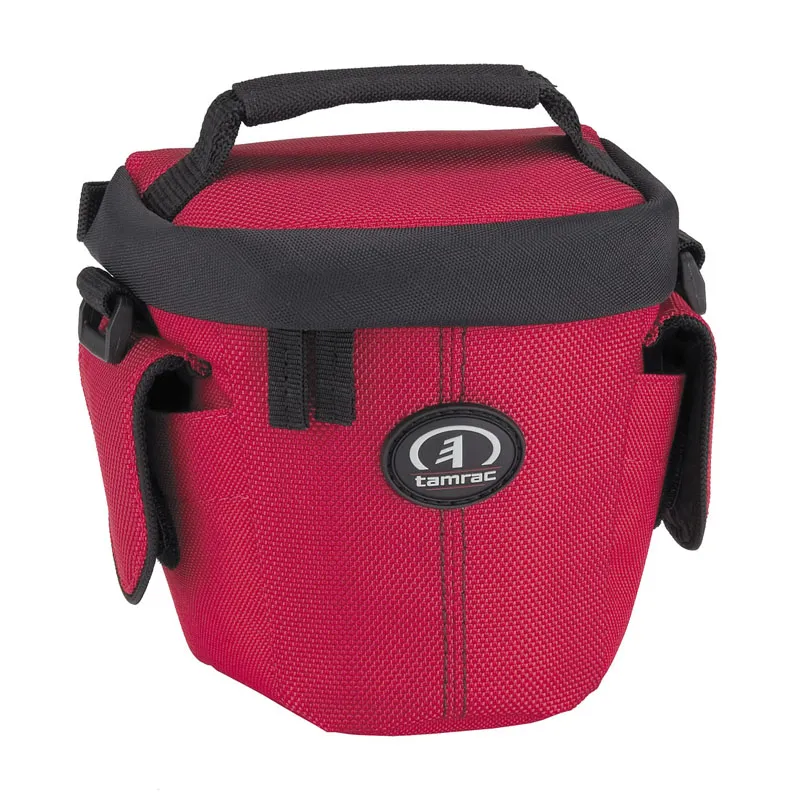
The so-called revolver bags from Tamrac are ideal for compact cameras and small SLR cameras.
For the second group, they are more expensive, heavier and larger, but open up unimagined technical possibilities. This is where real photography begins. Just a few years ago, even the simplest housings were very expensive and offered just 2 or 3 million pixels, but now the price structure has finally stabilized. Cameras with 10 to 15 million pixels should be completely sufficient for most photo enthusiasts in this category. Entry-level models such as the Canon 450D are now available for as little as 400 euros, while semi-professional models such as the Canon 50D or Nikon D300 currently cost around 1000 euros.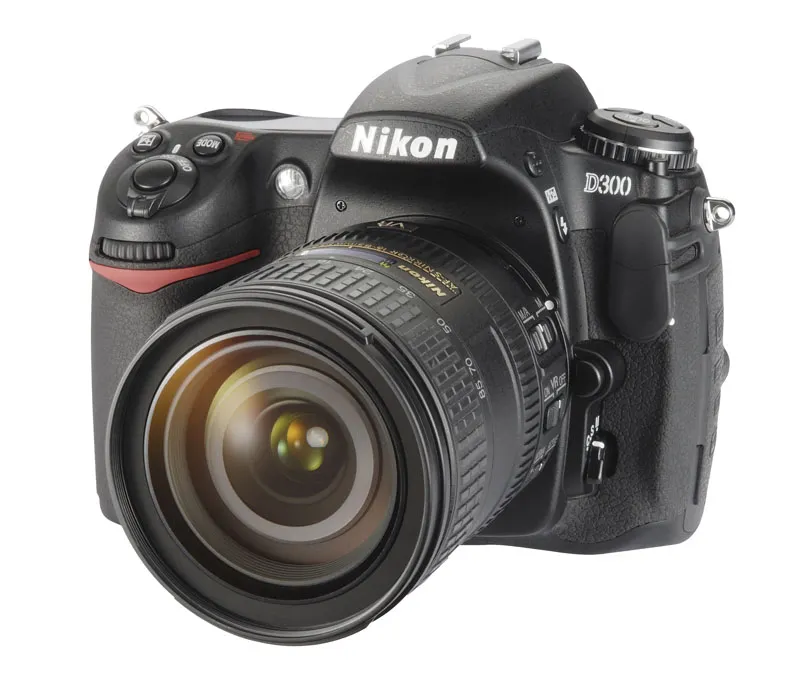
Nikon's D300 is not only a very good camera for the discerning amateur, but also for professionals.
Not only have these cameras become significantly faster, more robust and technically more sophisticated, they are now also (somewhat) more stable in value and more durable than two or three years ago. Cameras such as a Canon 50D (and of course their Nikon or Sony counterparts) offer incredible things, you could grow old with them (at least photographically). The resolution is sufficient for excellent prints up to A2, the speed of over six images per second is even sufficient for sports photography and the equipment leaves nothing to be desired.
Well sealed against sand and moisture, they can even survive the odd wild long-distance trip without damage. Add to this two varifocal lenses designed for this sensor size, such as the AT-X Pro 4/12-24 mm from Tokina and the EF-S 55-250 mm IS 7 from Canon, and a relatively large focal length range between extreme wide-angle and long focal length telephoto lenses is covered with compact equipment. However, due to the smaller sensor, which is common in this camera segment, the usual angle of view of the lenses changes.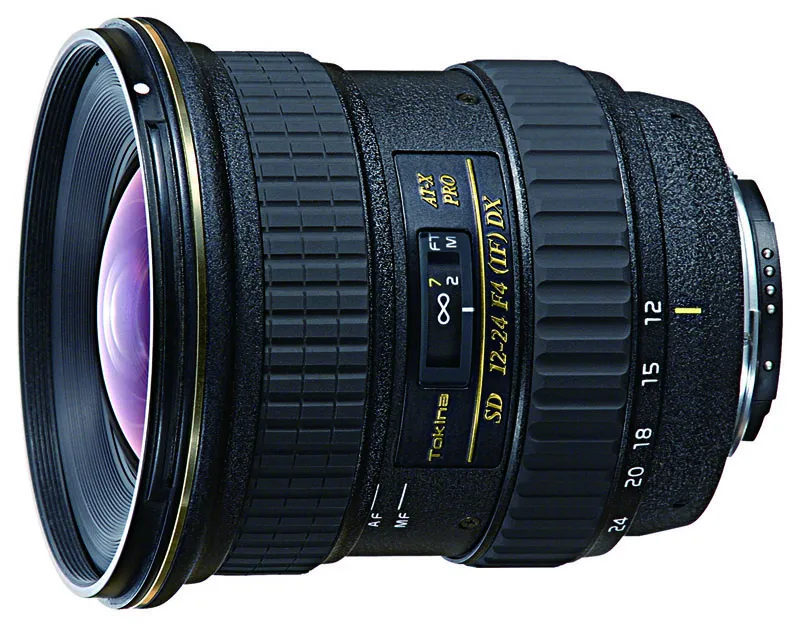
"The" classic among the wide-angle zooms: the Tokina SD f4 12-24 mm IF DX.
The Canon EF-S 55-250 mm is a small and lightweight alternative with decent image results for use in the mountains.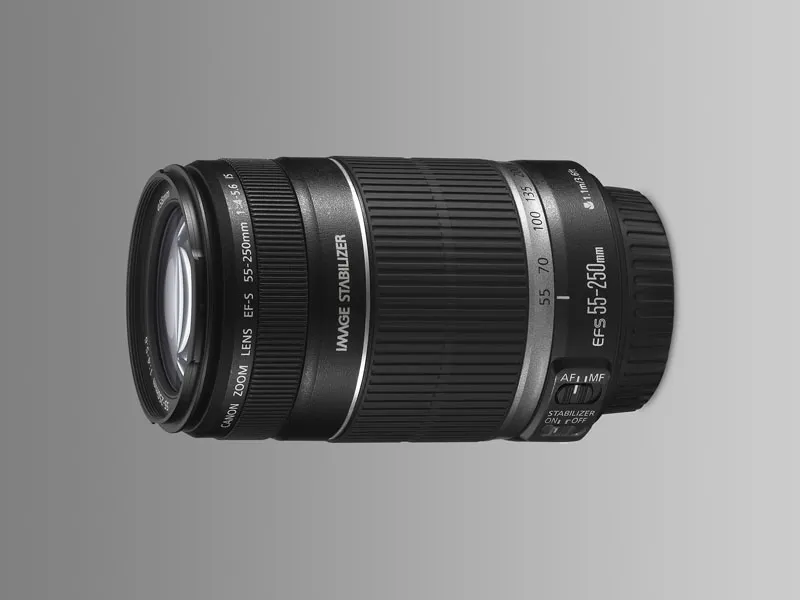
An extension factor of 1.5 (with Nikon) or 1.6 (with Canon) turns the "usual" angle of view of the 200 mm telephoto lens, for example, into that of a 300 mm lens.
Also important are the obligatory spare batteries, polarizing filters for the lenses and a small flash such as the Speedlite 430 EX II. Can anything else be missing? If so, then only small items for the peripheral areas of photography. For the close-up range, an intermediate ring or close-up lens (e.g. the 500D from Canon) would be conceivable in order to take full-frame photos of butterflies or flowers.
Why do I always recommend products from the market leaders? On the one hand, these companies are the most innovative in their product range, on the other hand they offer the widest range of accessories and lenses and at the same time the loss in value is the lowest.
Dear readers, there will be a lot of passion and perfectionism in the next few sentences. I cannot accept any liability for side effects and risks. There is a risk of infection. We are no longer talking about phrases such as "less is more", but about dreams, sometimes of sensational quality, but also of a lot of money. Whether "one" still needs this quality of 21 million pixels, for example, remains to be seen. Who needs 300 hp?
What requirements do I actually have for my ideal equipment for landscape photography in the mountains? It must be portable, i.e. it should not weigh more than 10 kilograms including the tripod. It has to deliver maximum image quality for calendar prints, for exhibition prints up to A1 and, last but not least, of course, for illustrated books, enabling the greatest possible variety of motifs and perspectives.
I would like to start with the camera. Whether Nikon D3, Sony Alpha 900 or Canon 1Ds MkIII, all three models deliver excellent results.
My indestructible workhorses: the Canon 1D Mark III for sports action and the 1Ds Mark III for landscapes: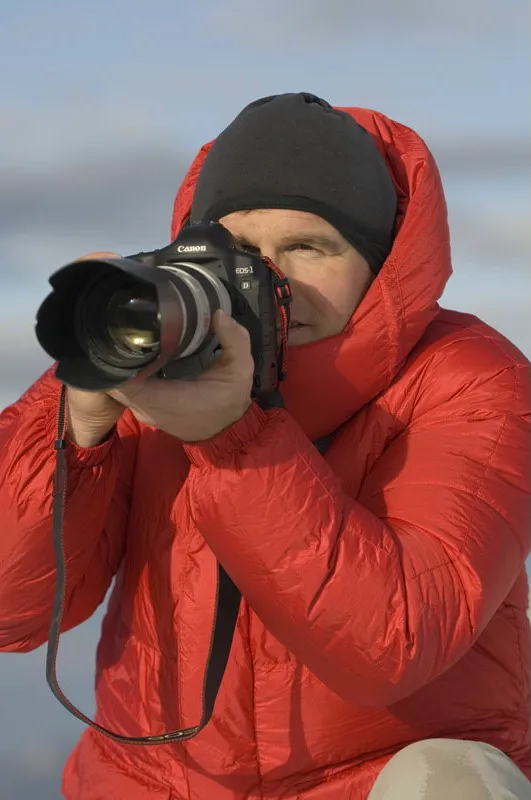
My choice fell on Canon a long time ago. At the moment I'm working with the 1Ds MkIII and recently also with the new 5D.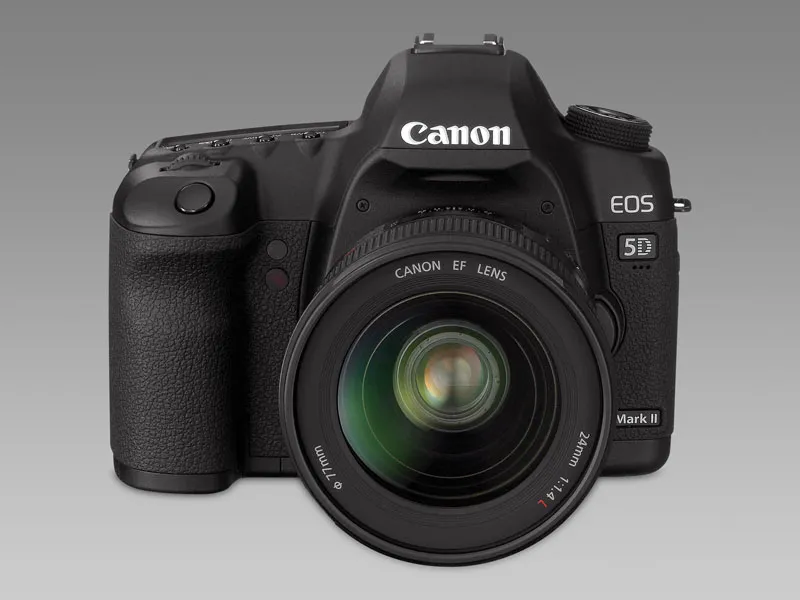
The ultimate camera for outdoor and mountain use: Canon 5D Mark II. Not too big, not too heavy and still exceptionally good image quality.
It will probably be my first choice, at least for alpine productions, due to the weight and volume advantage. In addition, the following lenses: the Canon EF f2.8 14 mm L II for the super wide-angle range, the Zeiss Distagon f2.8 21 mm (with Huppert adapter) as a "normal" wide-angle lens with incredible imaging performance, the extremely small and light, yet excellent Zeiss 3.5-4.5 28-70 mm (with Huppert adapter) for the "standard range" and the outstanding Canon EF f4 70-200 mm L IS for the telephoto range. Plus an extension ring and the Canon 500D close-up lens for the close-up range, a Speedlite 580 EX II and two spare batteries.
To increase the contrast between the sky and clouds and to avoid unwanted reflections, I brought a polarizing filter for all diameters. To compensate for strong differences in brightness between brightly lit and shaded areas, I always have various neutral gray graduated filters with three and four Blenders as well as with soft and hard gradients in my photo bag. On pure photo tours, I have all the photo equipment safely and stably stored in a Tamrac photo backpack.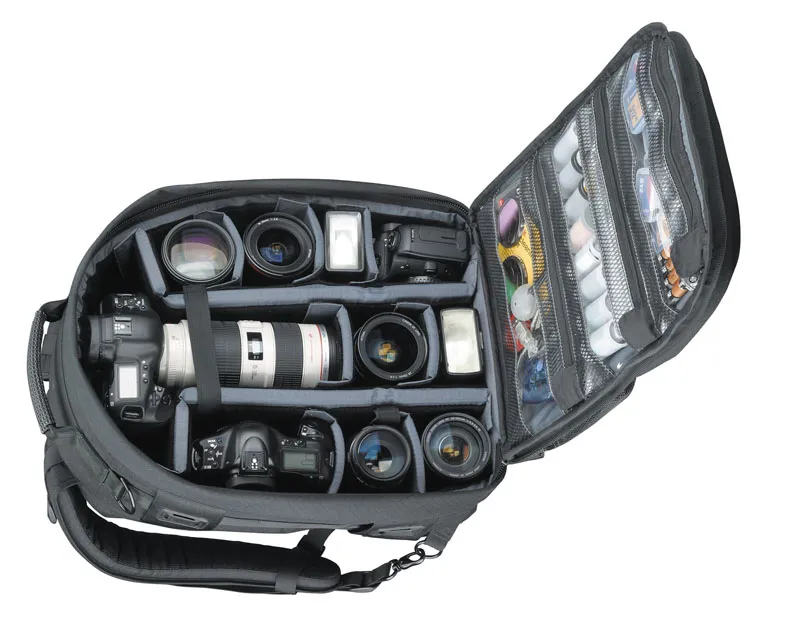
The Tamrac Expedition series: Photo backpacks for the toughest applications with the best quality are my first choice for pure photo tours. A large photo backpack from the Tamrac Expedition series with complete equipment for pure photo tours without long distances. On tour, of course, the lenses should be covered.
On alpine tours, however, I prefer to use a photo bag, which in turn is stored in the large mountain rucksack. To avoid getting hopelessly lost during my nocturnal ascents and descents, I also need a powerful headlamp, preferably with a power LED to help me find my way, even at greater distances.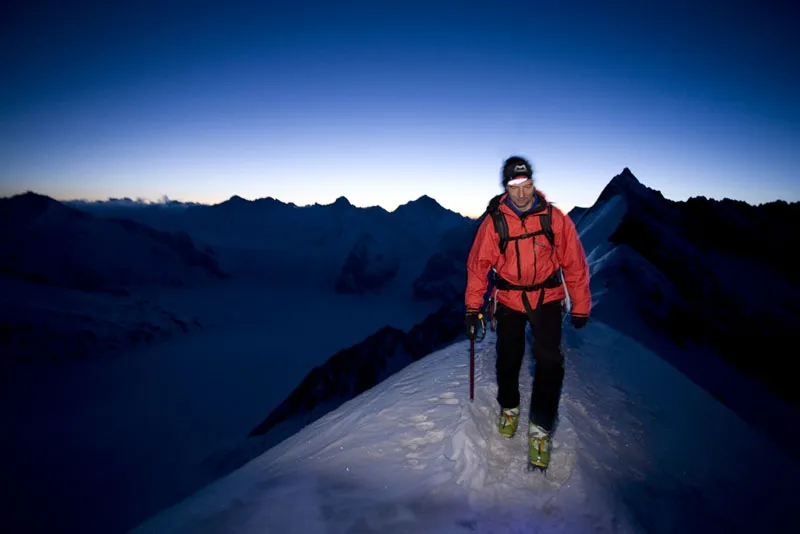
Power LED headlamps have become indispensable, especially on high alpine tours.
The last really expensive item is the tripod. Since I "terribly" save on food for weight reasons, every gram counts when it comes to tripods.
Products made of aluminum (weight including tripod head over 2 kilograms) are the cheapest, the compromise of basalt (total weight approx. 1.5 to 2 kilograms) is really a compromise and tripods made of carbon are really fun.
The carbon tripod, here a model from Slik, makes mountain photography much easier.
With a weight of only 1 to 1.5 kilograms, they are nevertheless very stable and are therefore completely sufficient for normal KB-SLR equipment.
Add spare clothing, a snack, water bottle, etc., and the mountain photographer becomes a load carrier. Despite the weight, despite the cost - have fun in the mountains.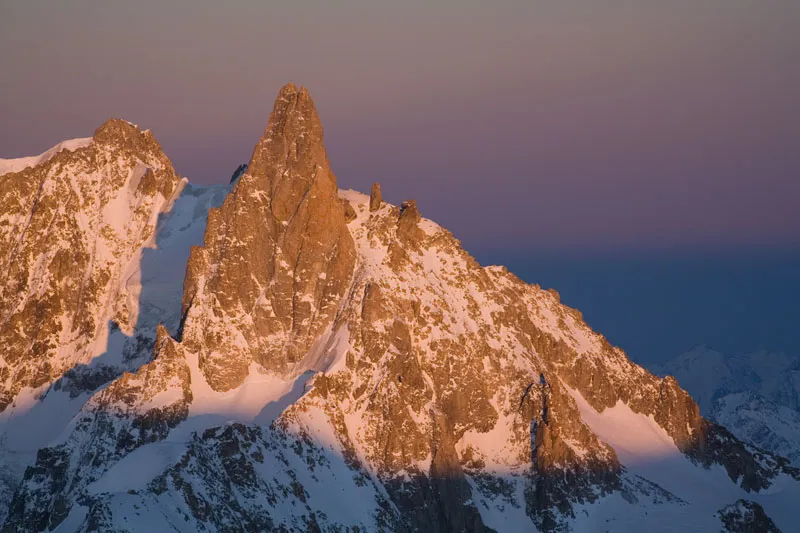
The Dent du Geant in the evening light, Mt. Blanc region, France.
